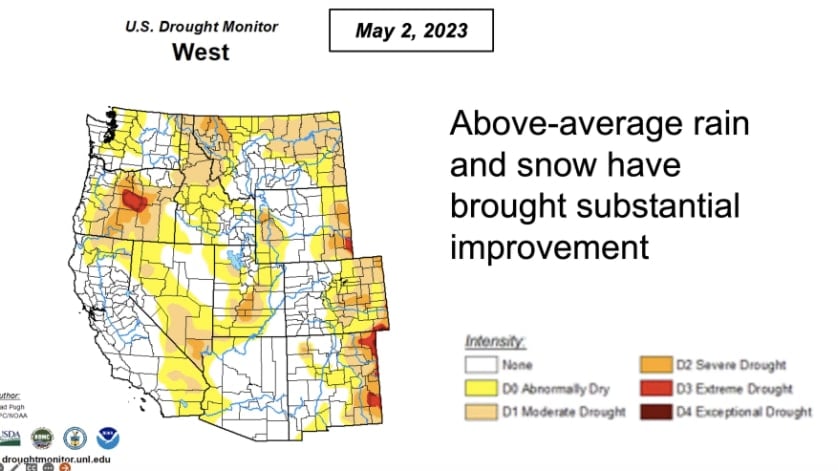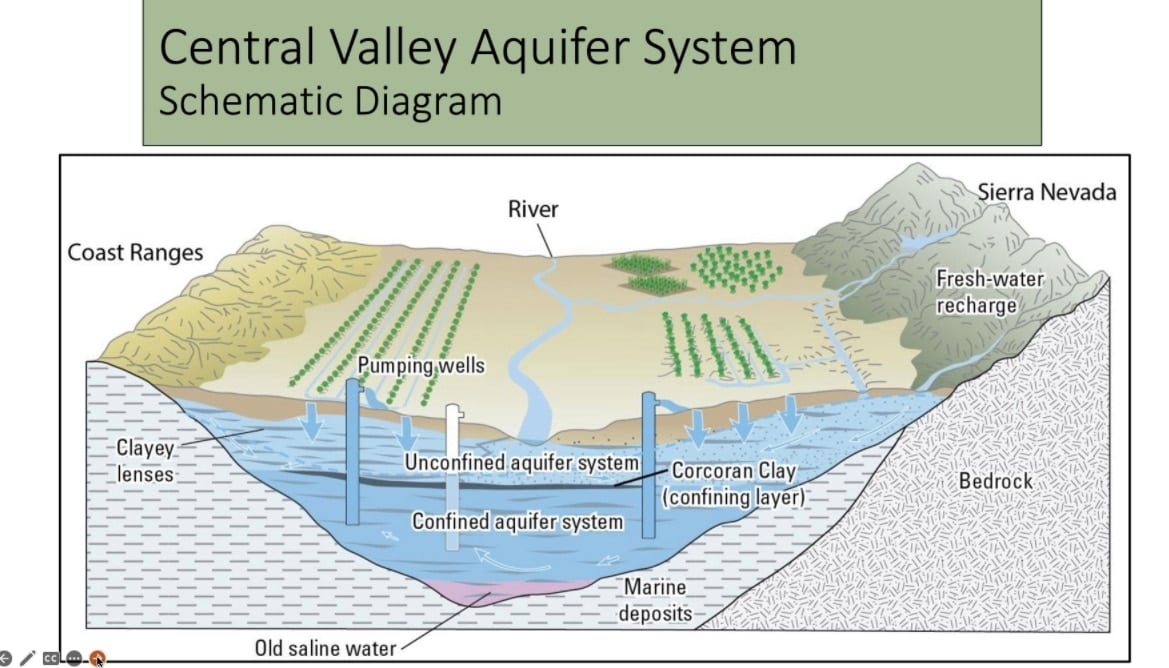SACRAMENTO, Calif. (CN) — While California's water outlook saw marked improvement in the short term, climatologists say years of worsening conditions across the West will take far more than this winter's storms to recuperate.
Veva Deheza, executive director for the National Oceanic and Atmospheric Administration's National Integrated Drought Information System, said in a briefing Tuesday that about 25% of the West remains in drought — compared to 74% at the start of the water year this past October.
“However, we recognize that not all states received above-average precipitation,” Deheza said.
“It will take more than one winter, albeit a very wet winter, to replenish the water in many areas as well as Lakes Powell and Mead -- which are still at historic low levels.”

Joe Casola, Western Regional Climate Services Director, credited the drought recovery to an “anomalous” winter with above average precipitation, colder temperatures and abundant snowpack. More than half of the West’s drought appears to be healing, particularly in California — where surface reservoirs sit at about 105% of their normal storage capacity collectively.
However, reservoirs in some parts of Oregon remain unfilled. Pockets of drought persist in eastern Oregon, southern Nevada and parts of Utah and New Mexico.
“We shouldn’t take too celebratory a note about having lots and lots of rain,” Casola said, noting the devastating consequences of too much rain in California.
David DeWitt, director of NOAA's Climate Prediction Center, said there is about a 60% chance of El Niño conditions beginning this summer, with those chances increasing to 80% by fall. By winter, the Southwest can expect “above normal precipitation” while the Pacific Northwest could see less than usual.
Jon Traum, hydrologist for the California Water Science Center, said that California’s groundwater conditions remain unclear.

Groundwater is recharged as precipitation makes its way into underground basins, so underground supplies take longer to recharge than surface reservoirs and other above-ground water collection methods. As storms increase in intensity and frequency, it becomes more difficult to balance bringing in water to replenish groundwater supplies.
“It’s really difficult to tell you what the current conditions are,” he said. “We don’t have a way to go outside and look at the groundwater system.”
Instead, California's hydrologists drill into the ground to make observation wells, to see how underground levels are responding to recent storms. Traum said it could take six months to go through the data and approve it for public review, and it is not all collected yet.
Unfortunately, land subsidence will continue as years of drought and too much pumping of groundwater for agricultural purposes can cause irreversible land compaction deep inside aquifers.
That subsidence can permanently damage infrastructure and the environment. For example, the Friant-Kern canal serving the southern Tulare Lake Basin has lost 60% of its capacity due to subsidence. That could cost the state at least $500 million to repair, Traum said.
“This drought causes some permanent impacts, that can’t just be recovered by a flood and what we’re having right now,” he said.
Traum said that California is now trying to stop groundwater pumping — including by people who do not have surface water rights — while increasing local storage and funding managed aquifer recharge projects.
The California Department of Water Resources said in a statement Tuesday that it is implementing an emergency program to divert high river flows away from flood-prone Central Valley communities and into groundwater recharge basins.
The goal is to capture and divert as much water from the snowpack as possible, including diverting flows from rivers using recently fallowed or open and working lands, or pumping and spreading water to recharge depleted groundwater basins.
The state has deployed temporary pumps and siphons across the Central Valley, to reduce downstream flood impacts particularly in the Tulare Lake Region while diverting water from Kings River to recharge facilities or agricultural lands. Operating these pumps for the next four months could capture at least 55,000 acre-feet of water. One acre-foot of water is about 326,000 gallons, or the size of a football field with one foot of standing water, and can supply nearly three households for an entire year.
“In times of emergency, it’s critically important that state and local agencies roll up our sleeves to coordinate and communicate what is needed,” said Paul Gosselin, deputy director of groundwater management for the state Department of Water Resources. “Based on feedback from local agencies, DWR acted quickly to secure this needed equipment so agencies could expand their capacity to divert high river flows and increase groundwater recharge.”

Subscribe to Closing Arguments
Sign up for new weekly newsletter Closing Arguments to get the latest about ongoing trials, major litigation and hot cases and rulings in courthouses around the U.S. and the world.









